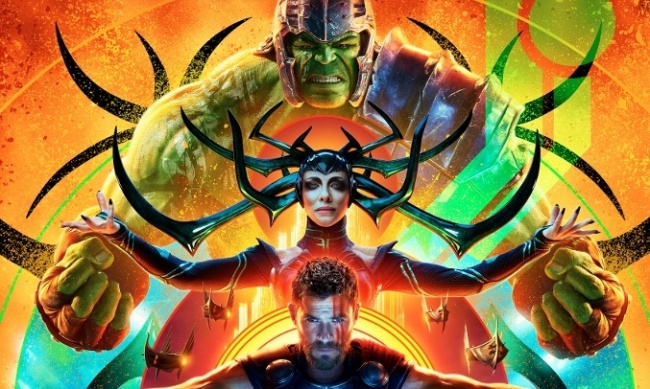Excitement is rising for the final superhero cinema battle of the year: Marvel Studios’ Thor: Ragnarok (November 3 release) vs. Warner Bros.’ Justice League (November 17). Both studios are rolling out the promotional campaigns, including a wide-band social media blitz. So which of the big properties is winning the early battle for fan engagement?
Thanks to some fascinating new social media measurement tools, we can get a better answer to that question than we could in the past. A bunch of next-generation analytics products are taking advantage of the computational number-crunching power of the cloud to churn through unthinkable amounts of data being generated by Facebook, Twitter, YouTube and other social media platforms to give us better answers to tough questions.
One I’ve been using recently is from a New York-based startup called Shareablee, founded by Tania Yuki, a young veteran of the media analytics business. I ran across them last year at the Microsoft Accelerator, a finishing school for promising data-based companies, and saw potential for how this tech could be used in the geek culture business.
Many platforms, one audience. One of the useful features of Shareablee is that it measures key performance across a bunch of different social media channels at once, so you can compare results and see the big picture, rather than just relying on Facebook or Google data. Also, because Shareablee measures engagement on multiple levels, it’s possible to see what content is actually resonating with fans rather than just generating empty clicks.
The benefits of taking the wide view are that companies can figure out which social media platforms are doing the best job reaching their intended audience, both in terms of total reach and per post or per dollar. For example, if Warner Bros dumped a ton of money into Facebook, it wouldn’t be surprising to see strong results there, but it would be much more interesting for a media planner if a single Instagram post went viral despite no real effort to reach people through that channel.
Sizing up the competitors. I tracked Thor: Ragnarok and Justice League over the past 30 days, from August 19-September 18. That’s still early days for films not due out for another six to eight weeks, but the results were interesting.
On Facebook, Thor is putting the hammer down, with 12.9 million fans (370,000 actions on 17 posts) to JL’s 1.2 million (57,000 actions on 13 posts), generating 10x more impressions. Thor is crushing it on Twitter as well, racking up 9x more followers (1.05M on 20 tweets, vs. 159K on 6 tweets for Justice League). So game over, right?
Not so fast. Justice League is doing way more on Instagram, with close to a million followers, compared to just over 6000 for Thor. In fact, Justice League’s Instagram campaign appears to be quite sophisticated, generating engagement with media posts and posts that include questions. Overall, Justice League is creating more engagement and more actions per post than Thor despite having a smaller audience overall.
When you compare the social reach of these two films with the numbers from Guardians of the Galaxy 2 and Wonder Woman six weeks out from their releases last Spring, you get some additional nuance. Justice League is outperforming Wonder Woman on just about every metric, sometimes dramatically, whereas Thor is ahead of Guardians of the Galaxy in some areas and way behind on others (video views, for example).
We won’t know how the social metrics correlate to performance of the films at the box office for another couple of months, but it’s an interesting trend to follow, especially if you are a licensor or merchandise partner hoping to cash in from affiliation with a talked-about property.
The Tip of the Iceberg. The fan culture business is all about engagement. All brands want to be talked about, but this particular corner of the entertainment world thrives on the passion of fans who seek out, share and act on content.
All the things that distinguish fans from ordinary consumers – knowledge, passion, curatorial and collector behaviors, influence over peers – generate strong signals that social measurement tools can read loud and clear. In the roaring torrent of data generated by social media platforms, geek culture fans sparkle like diamonds.
By better understanding the trends and patterns in social data, publishers can figure out the best channels to reach new readers. Producers can target and promote new shows to audiences with greater precision, increasing the odds of building the kind of super-engaged fan base that Wynonna Earp, iZombie and The 100 have drawn, despite smaller top-line viewership. Licensors can figure out what’s hot with what customers and why, reducing the risk of investments in lesser-known properties and increasing the chances of finding the next breakout hit.
Shameless plug. If you’re the kind of nerd who finds this sort of thing interesting, consider signing up for the NYCC Insider Sessions Powered by ICv2, where I’ll be presenting a detailed look at how tools like Shareablee, Affinio, and proprietary data analysis technologies from Showclix can shine light into the darker corners of the business.
Rob Salkowitz (@robsalk) is author of Comic-Con and the Business of Pop Culture.
The opinions expressed in this column are solely those of the writer, and do not necessarily reflect the views of the editorial staff of ICv2.com.

Column by Rob Salkowitz
Posted by Rob Salkowitz on September 19, 2017 @ 2:39 am CT





